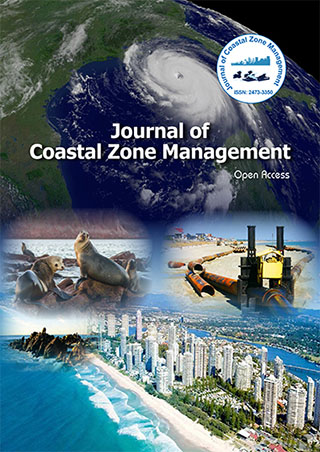インデックス付き
- セーフティライト付き
- レフシーク
- ハムダード大学
- エブスコ アリゾナ州
- OCLC-WorldCat
- パブロン
このページをシェアする
ジャーナルチラシ

概要
汚染管理 2020: GIS の AHP アプローチを使用して、サヴォイボラーグ郡の都市廃棄物の埋立地を特定する - アルズービ・イシャム、テヘラン大学
アルズビ・イシャム
廃棄物の埋立地の選択は、自治体の廃棄物管理における重要なステップであり、経済、環境、土地分野の生態系の破壊的影響に応じて、埋立地の選択は科学的な手順から選択する必要がありました。埋立地は、廃棄物の分解によって環境と人間を汚染し、浸出液、メタン、CO2ガスを生成する可能性が高いです。この研究の目的は、埋立地に最適な場所を特定し、サヴォイボラの廃棄物管理に役立つ方法を提案することです。この研究では、経済、社会、環境、技術、物理など、多くの批評家が使用されました。最初に、批評家と配置の原則が文献に基づいて説明されました。次に、地形、土壌タイプ、道路、浮遊性、歴史的場所、産業場所、住宅地、土地の用途などの考慮された情報レイヤーが使用されました。数値マップを使用してすべての批評家と制限を考慮し、GISソフトウェアを適用して4つの場所を特定しました。特定された場所の分類は、AHPインデックスを使用して行われました。
キーワード:配置、無駄、批評、GIS、AHP
導入
近年、世界やさまざまな国で人口が増加し、その結果、都市部で固形廃棄物が過剰に使用され、最終的に生成されるようになりました。イランのほとんどの都市の環境問題を無視すると、焼却場の環境が隠れた敵として脅威にさらされます。廃棄物を集めて埋め立てる主な理由は、衛生遵守です。大量の廃棄物は、環境中に存在することで人間や生物に脅威を与え、人間の環境に問題を引き起こすという特徴があります。タブリーズ県の固形廃棄物の埋め立てと衛生埋設の問題によると、正しい配置が必要です。この研究では、環境要因を考慮して適切な場所を選択するために、GISソフトウェアを使用しました。最近の埋設場所は、まもなく使用できなくなることが10年間予測されていました。そのため、調査の必要性がより重要です。
研究の文献/演劇的背景のレビュー:
Koohi (1385) investigated on the solid waste materials placing in Qarchak city. In this study appropriate places for burry solid waste materials were determined using the programming and management organization of Iran instruction, environment protection organization of Iran, environment protection organization of the United States placing critics. Finally by adoption the critics a model for Gharchakcity was established and the burring place was determined. Soomati (2007) Multi Criteria decision analyses and overlap analyses by GIS choosed a new place to bury solid waste materials. The suggested system could be updated with new information about solid waste materials placing. Different factors considered in the placing procedure include: geology, water sources, sensitive regions, wheatear and subterraneous quality and land use. The weights determined for each scale based on their relative necessity and their assortments based on the amount of effects. The results of this system usage in different places show its affect in placing procedure. In the other study, chang et al. (2008) presents a fuzzy multicriteria decision analysis alongside with a geospatial analysis for the selection of landfill sites. They employ a two-stage analysis synergistically to form a spatial decision support system (SDSS) for waste management in a fast-growing urban region, south Texas. The first-stage analysis makes use of the thematic maps in Geographical information system (GIS) in conjunction with environmental, biophysical, ecological, and socioeconomic variables leading to support the second-stage analysis using the fuzzy multicriteria decision-making (FMCDM) as a tool. Yung et al.(2008) investigated on the (i) analyze the leachate and gas emissions from landfills used for domestic waste disposal in a metropolitan area of Jiangsu province, China, investigate remotely-sensed environmental features in close proximity to landfills, and also evaluate the compliance of their location and leachate quality with the relevant national regulations. The leachates of the sampled landfills contained heavy metals (Pb, As, Cr (6+) and Hg) and organic compounds in concentrations considered harmful to human health. Measured methane concentrations on landfill surfaces were low. Spatial analysis of the location of landfills with regard to distance from major water bodies, sensible infrastructure and environmental conditions according to current national legislation resulted in the rejection of four of the five sites as inappropriate for landfills. Our results call for rigorous evaluation of the spatial location of landfills in China that must take into consideration environmental and public health criteria. Among waste management are reduce, recover and convert waste materials to the useable materials. In All steps some amount of materials remains that must be buried, so finding appropriate place is the most important step in waste material management (Sener et al. 2006). This issue ever was the problem for human. Choose inappropriate burring place cause water, soil and climate contamination (Environmental Protection Organization, 1380). Many critics and indexes had been suggested to find appropriate place for burring that each of them proposed limitations and specific conditions. In the other words each one of critics had been constructed based on the scientific Background, So that led to placing studies find Interdisciplinary and multidimensional identity (Shamsaiifard, 1382).The main aim of placing is to find the most appropriate place that has lower adverse effects on the environment and natural resources, in terms of economic with least-cost and best specification from engineering vision (ghazban, 1385). So, data processing and evaluation had to be done compared to limitations, regulations and factors (daneshvar et al. 2003).